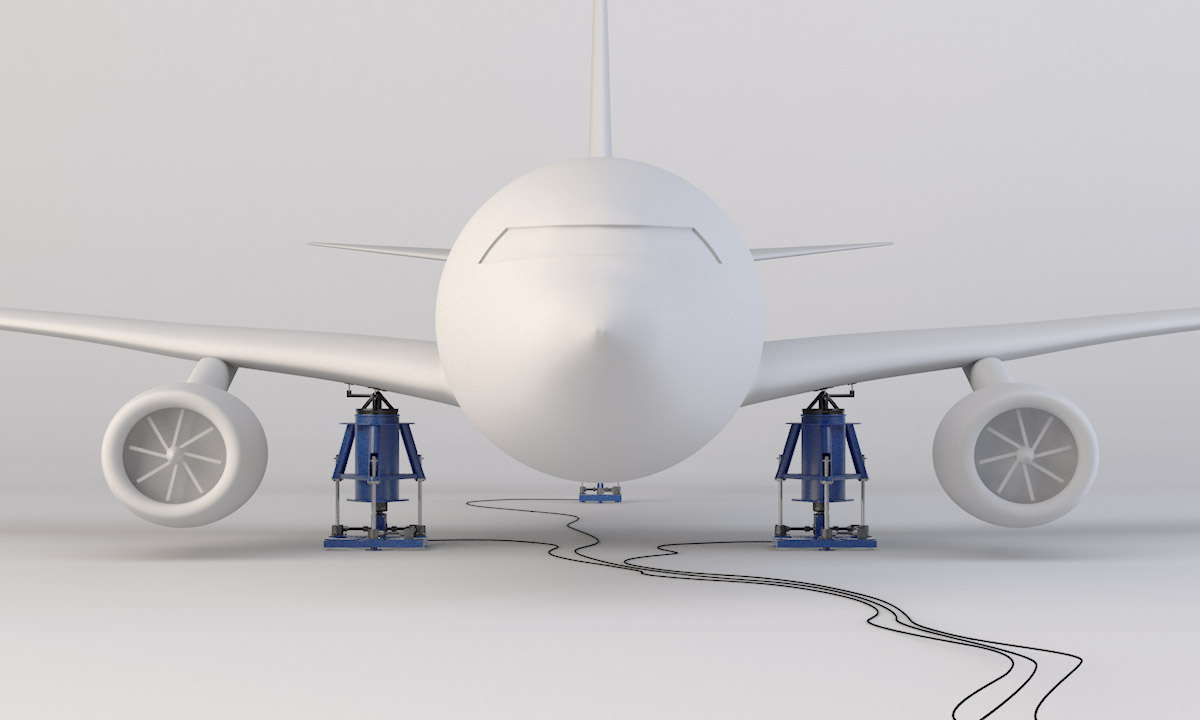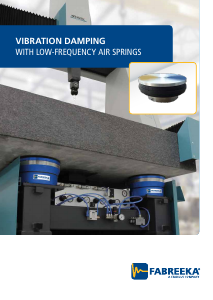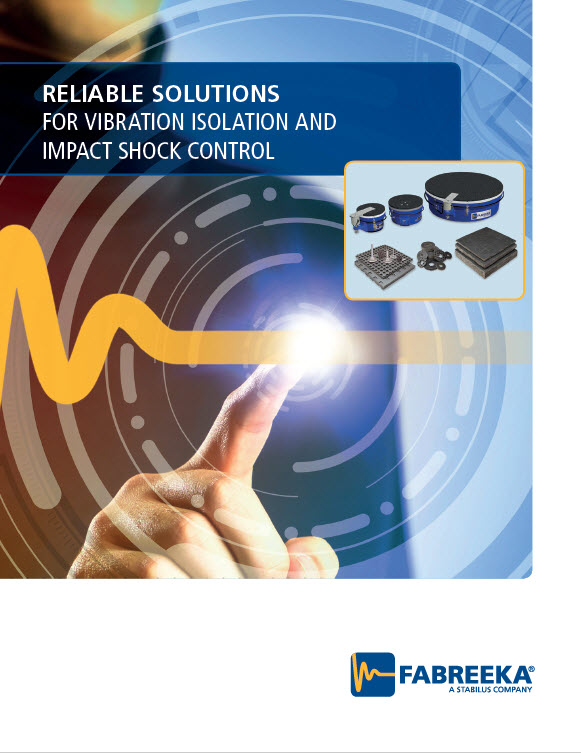



Precision Aire™ leveling PAL pneumatic isolator systems from Fabreeka provide superior low frequency vibration isolation using automatic leveling membrane air springs. PAL isolators are ideally suited for conditions requiring both height control and vibration isolation.
A complete Fabreeka-PAL pneumatic isolation system consists of at least three master isolators for three-point level control. Each isolator has an integrated level-control valve that functions as a load sensor and height control. Any number of additional isolators may be added to support the total device weight. Each system comes with a control unit, automatic level control valves, pneumatic tubing and all of the other pneumatic accessories necessary for complete system installation.
PAL air springs respond quickly to changes in load and center of gravity. Deviations from positions once preset are automatically readjusted. Air spring system performance is always a compromise between natural frequency (isolation), level control valve restoring accuracy and settling time.
Special isolators for low frequencies
The horizontal natural frequency of standard PAL air isolators is between 3.0 – 4.5 Hz. To achieve a lower natural frequency, Fabreeka designs special pendulum isolators which can achieve a natural frequency as low as 0.4 Hz. Pendulum air isolators for low frequency vibration isolation require an outer support frame and incorporate three cables or rods to allow the isolator to achieve the low stiffness in the horizontal direction (sway). The lengths of the cables or rods determine the horizontal natural frequency so height is the limiting factor on how low of a frequency that can be achieved.
Fabreeka also designs and manufactures air springs for OEM and special applications which can integrate easily into existing machine designs. Additionally, Fabreeka provides isolation systems for inertia mass isolation, suspended platforms and machine frames to improve stability, while also decreasing the relative height of the isolated device’s center of gravity.


What is the leveling accuracy of the PAL isolators?
The leveling accuracy of the PAL isolators depends on the type of valves used. The standard FLV-4 valve has an accuracy of +/-0.005″, while the optional FLV-7 valve has an accuracy of +/-0.001″.
What are the vertical and horizontal damping values for PAL isolators?
The vertical damping value of a PAL isolator is adjustable by 6-20% on all standard sizes, while the horizontal damping is 3-6% depending on the isolator type.
Will you explain transmissibility/percent isolation?
The transmissibility of an isolator is a relative measure given as a ratio of output amplitude to input amplitude. The lower this ratio, the greater isolation an isolator provides.
Which leveling valve is recommended for my application?
The standard PAL isolators use the FLV-4 valve, which is suitable for most applications. If the isolated mass has a distance between isolators less than three times the vertical center of gravity, is supported by only three isolators or a large moving mass, a FLV-7 valve may be necessary. Large systems may require higher flow valves. Please contact Fabreeka’s Engineering department at 1-800-322-7352 or info@fabreeka.com to discuss your specific application.
What size PAL isolators should I use for my application?
PAL isolators are sized based on the total supported mass and the number of isolators used. All isolators have a maximum load capacity at 100 psi, which should not be exceeded. All isolators should have a working pressure within 15 psi of each other for stability.
What type of tubing should be used to connect to my air supply?
All tubing and fittings used for our pneumatic systems should be rated for a minimum of 120 psi working pressure. 1/4″ OD tubing is a minimum recommendation. Tubing and fittings are supplied with our systems.
What are the major design parameters/calculations when choosing pneumatic isolators to isolate my equipment?
In order to select a pneumatic isolation system, the following information is necessary:
What is the air consumption of a PAL system?
The air consumption is determined by the valves used in the system. The maximum consumption is 16 scfm at 100 psi during the initial filling, but if less is available, it will simply take longer to fill the isolators. During normal operation, the system will consume zero to 4 scfm, depending on how much the isolated mass moves.